Affiliate links on Android Authority may earn us a commission. Learn more.
Samsung Galaxy M40 vs Xiaomi Redmi Note 7 Pro: Samsung fights back
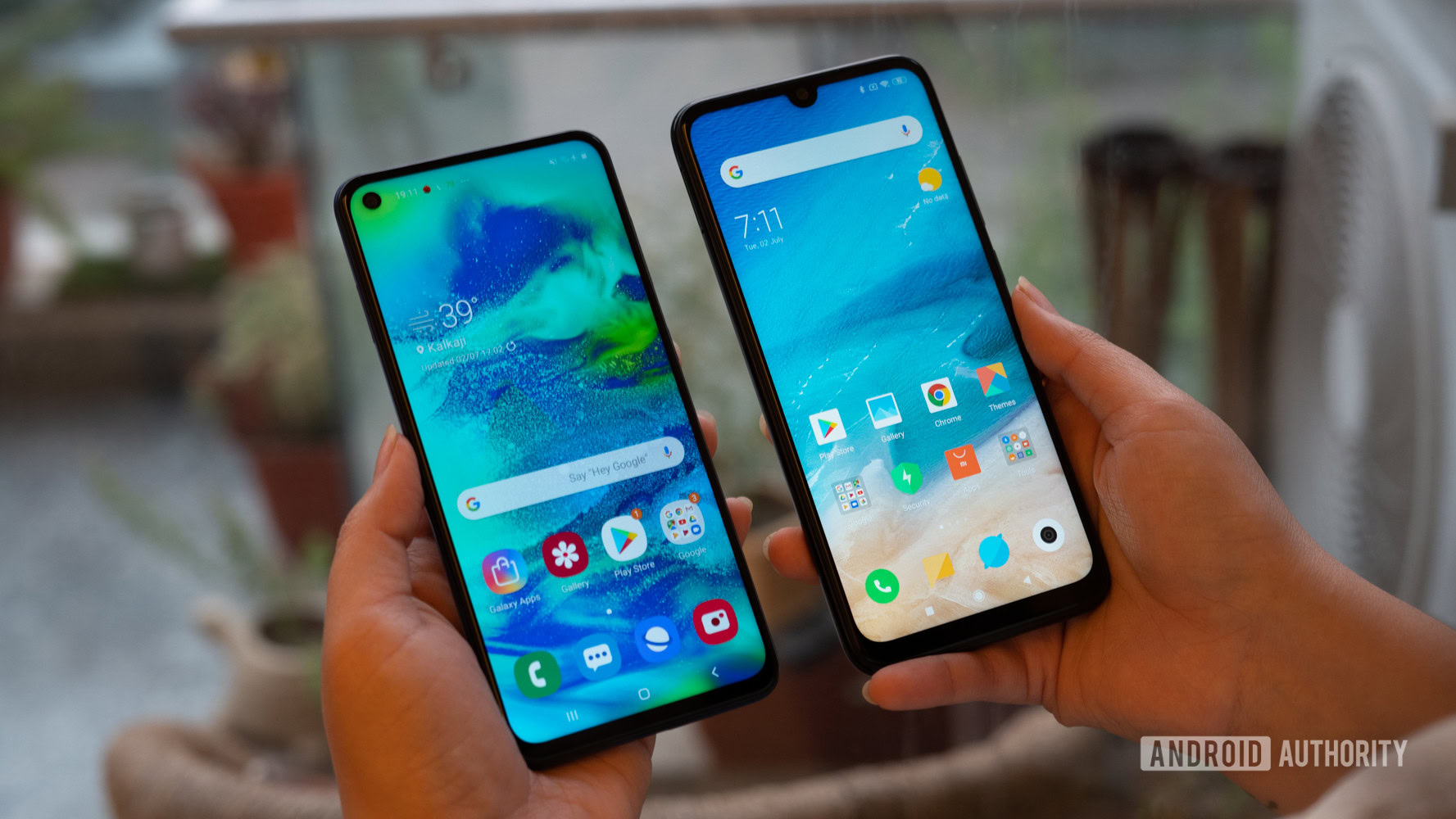
It wasn’t that long ago that Samsung completely dominated the smartphone market in India. From the ultra-affordable to the absolutely high-end, Samsung smartphones were often the best and only way to go. Samsung was caught napping, though, in the crucial budget-friendly segments, opening the door for the likes of Xiaomi to swoop in and wow the public. Cheap no longer means low quality, and Xiaomi had a huge role to play in that.
It took until 2019 for Samsung to finally stop playing defense and bring the fight to Xiaomi with its Galaxy M-series. Meanwhile, Xiaomi has had years to refine and improve its smartphones, with the hugely popular Redmi Note series getting better with every generation. The latest Galaxy M from Samsung is primed to take on the greatest Redmi Note there is. How do they compare? We find out as we take a closer look at the Samsung Galaxy M40 vs Xiaomi Redmi Note 7 Pro!
Design
Samsung Galaxy M40
- Polycarbonate
- 155.3 x 73.9 x 7.9mm
- 168g
- Infinity-O (punch hole) display
Xiaomi Redmi Note 7 Pro
- Glass
- 159.2 x 75.2 x 8.1mm
- 186g
- Teardrop “U” notch
Samsung continues to experiment with the notched experience on the Galaxy M series. In fact, every phone in the series features a different notch design. This time around, though, Samsung moves away from the “traditional” notch and brings its flagship design language to the mid-range, at least up front. With the Galaxy M40, the front-facing camera is housed in a punch hole that’s off in the top-left corner.
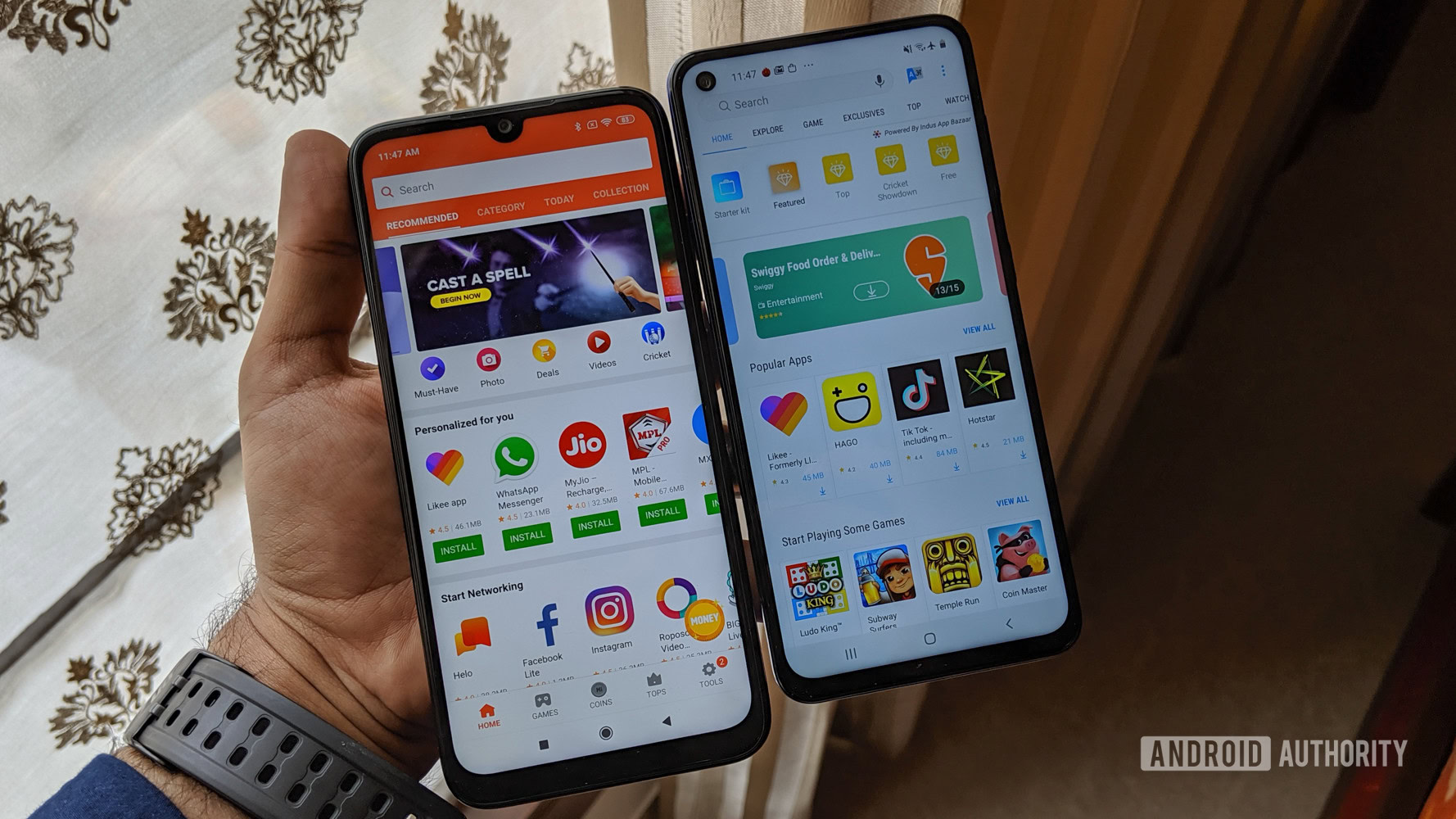
On the other hand, you get a regular teardrop notch on the Xiaomi Redmi Note 7 Pro. Which design you prefer is entirely up to you. I thought that having notifications placed slightly off-center because of the punch hole would be a problem, but it’s something I barely noticed after a while.
This is the first time we’re seeing the punch hole notch in this price segment, and Samsung has designed an entire — frankly quite cringe-y — marketing campaign around the Infinity-O display. So if you’re hoping to stand out from the crowd, the Galaxy M40 is the way to go. If you’re all for symmetry, the Redmi Note 7 Pro is the better choice.
Samsung's Infinity-O display is the first of its kind in this price range.
Xiaomi introduced a much-needed design upgrade with the Redmi Note 7 Pro in the form of an all-glass build. It’s not that the previous metal builds were bad in any way, but generations of the Redmi Note seemed to blend into each other because of the similar designs and short turn around times. The Redmi Note 7 Pro looks the part of a premium mid-range smartphone.
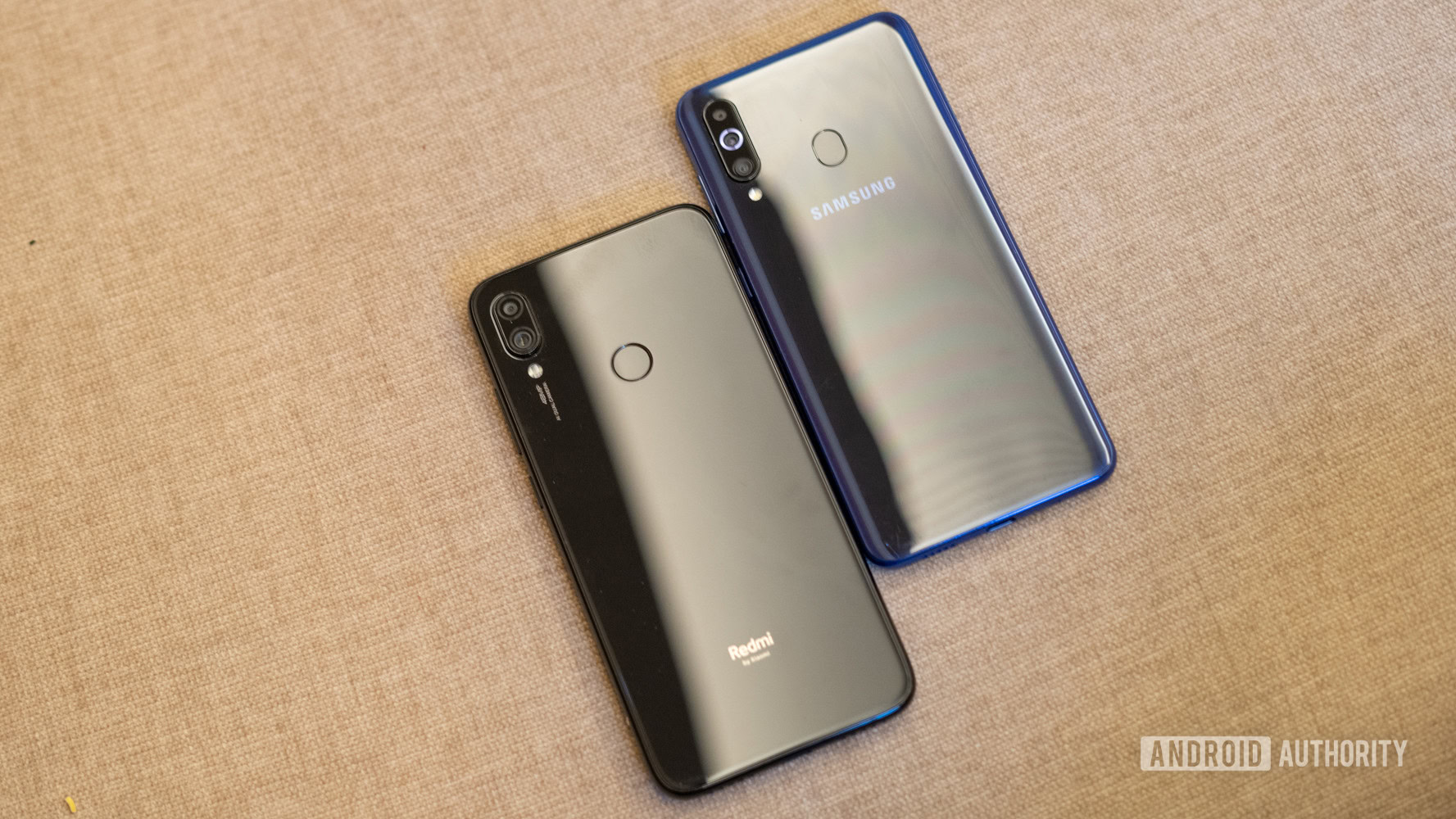
The Galaxy M40’s polycarbonate body allows for a lighter phone that will do better in case of an accidental drop. The glossy back reflects light from all angles and gives it the appearance of glass. Side by side, the Redmi Note 7 Pro just looks and feels a touch more premium than the Galaxy M40.
Display
Samsung Galaxy M40
- 6.3-inch IPS LCD
- Full HD+
- 19.5:9
Xiaomi Redmi Note 7 Pro
- 6.3-inch IPS LCD
- Full HD+
- 19.5:9
The displays of both smartphones are the same, at least on paper. However, Samsung’s display prowess shines through once again, so it’s no surprise that the Galaxy M40 has the slight edge here. It’s a touch brighter and the colors seem to pop a little more on the Samsung smartphone. It’s not AMOLED good, but it gets close.
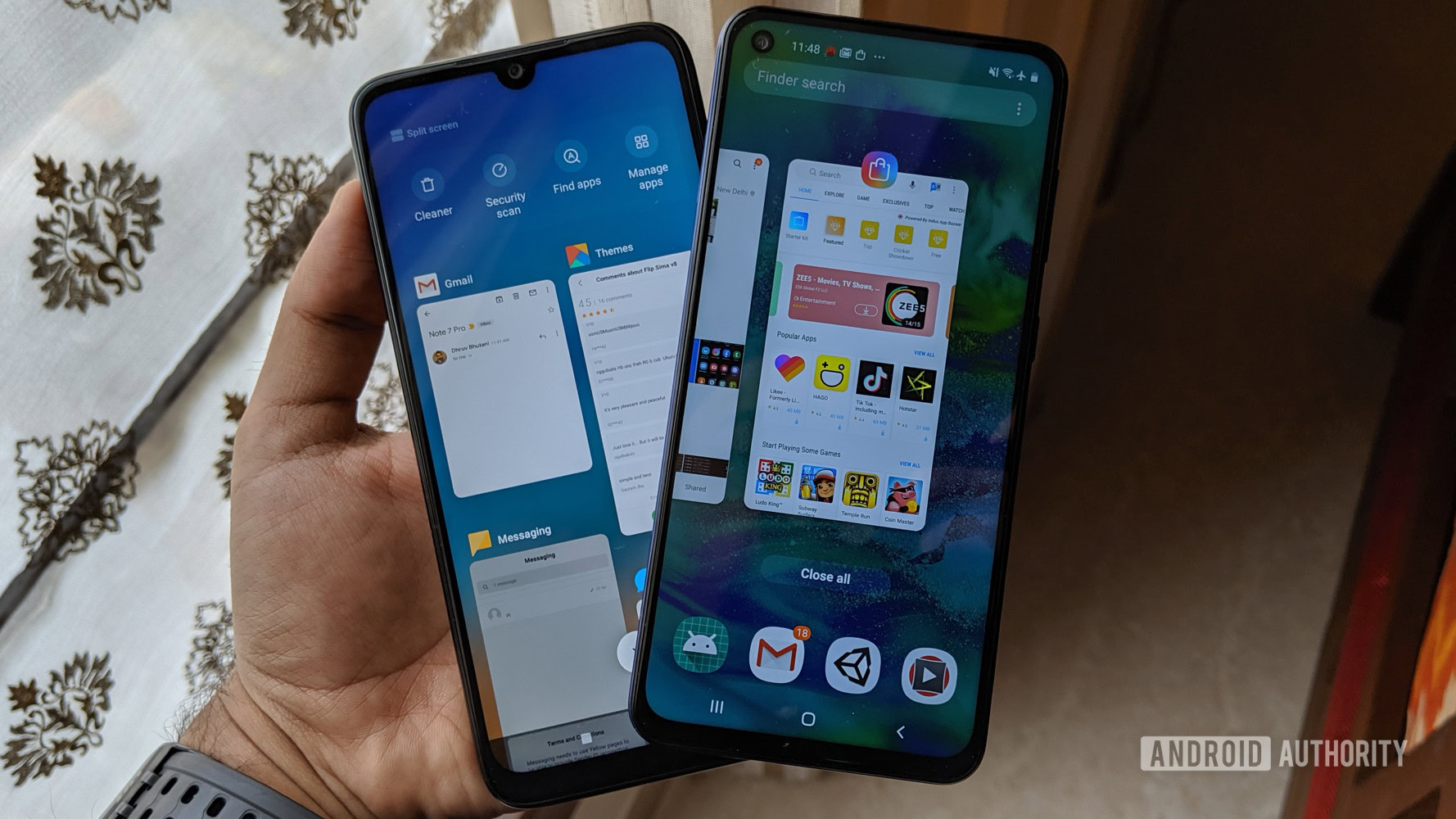
What is questionable though is Samsung’s decision to go with an LCD display in the first place. The cheaper Galaxy M30 and the similarly-priced Galaxy A50 both come with AMOLED screens, so the decision to leave it out with M40 is a real head-scratcher.
The Redmi Note 7 Pro, on the other hand, has a perfectly serviceable IPS LCD panel. There is no noticeable color-shift and the display remains very legible, even out in the bright summer sun. Colors tend to be ever-so-slightly oversaturated, but Xiaomi provides robust software tools to adjust this and more.
Performance
Samsung Galaxy M40
- Snapdragon 675
- 6GB RAM
- 128GB storage
- MicroSD, up to 1TB
Xiaomi Redmi Note 7 Pro
- Snapdragon 675
- 4GB or 6GB RAM
- 64GB or 128GB storage
- MicroSD up to 256GB
Both phones come with the same processing package, with the higher-end version of the Redmi Note 7 Pro and the Galaxy M40 offering the same amount of RAM and storage. The second SIM slot on both also serves as the microSD card slot to further expand storage.
Unsurprisingly, things are mostly even on the performance side of things. Despite falling squarely in the mid-range category, both phones can comfortably handle almost anything, save for the most graphic- and processor-intensive functions.
The Galaxy M40 offers a more consistent user experience because of the tight software-hardware integration.
Side by side, the Galaxy M40 manages to pull slightly ahead though, and that’s mostly because of how well the software has been matched to the hardware. No, it isn’t quite as smooth as that on the Galaxy A50, but the Galaxy M40 provides a more consistent and smoother user experience than the Redmi Note 7 Pro.
Animations across the Redmi Note 7 Pro's interface just aren't as smooth as you expect from the hardware package.
Samsung has done an excellent job optimizing its One UI for the hardware. The software experience is pretty smooth and aside of a few skipped frames, I didn’t notice much to complain about. This is one of the biggest positives of the current crop of Samsung smartphones. On the other hand, the lack of software optimization on the Redmi Note 7 Pro is even more glaring when pitted against the Galaxy M40. Everything is a touch slower and animations aren’t as smooth as they could be.
A cheaper variant of the Redmi Note 7 Pro is also available with less RAM and half the storage. Performance isn’t an issue with this version either, and it is a great choice if you’re looking to save some money. With the base 4/64GB version starting at just 13,999 rupees (~$200), the 6/64GB version priced at 15,999 rupees (~$235) and the top-end 6/128GB version available for 16,999 rupees (~$250), Xiaomi has ensured that there is an option for every budget. Meanwhile, the Galaxy M40 has a single SKU priced at a 19,990 rupees (~$290), a significant mark-up over the Redmi Note 7 Pro.
Hardware
Samsung Galaxy M40
- USB-C (USB 2.0)
- Rear fingerprint scanner
- No headphone jack
- NFC
- 3,500mAh battery
Xiaomi Redmi Note 7 Pro
- USB-C (USB 2.0)
- Rear fingerprint scanner
- Headphone jack
- No NFC
- 4,000mAh battery
Neither company gets too fancy with the hardware. Both come with standard fingerprint scanners on the back that work as expected and are quick to unlock the phone. The Xiaomi Redmi Note 7 Pro is the first of the series to make the jump to a USB-C port and you get the same with the Galaxy M40.
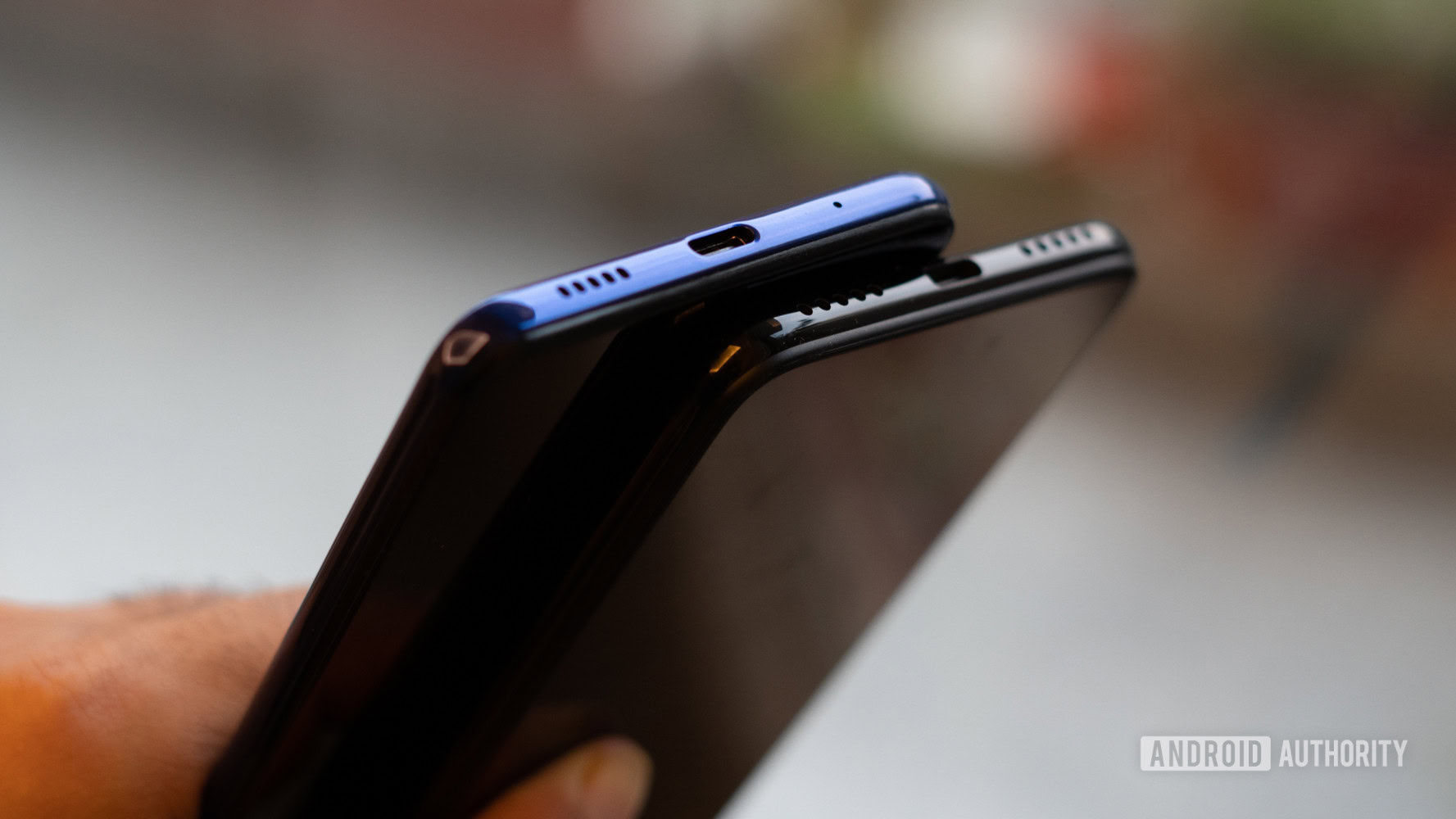
There are some key differences in hardware that makes choosing between the two easier. To start with, Samsung decided to pass on the headphone jack with the Galaxy M40. This is another odd decision, given that the Galaxy M30 and the Galaxy A50 both come with one. It’s not about the punch hole camera either, since the pricer Galaxy S10 series manage to keep the headphone jack.
If the lack of a headphone jack is a deal breaker, the Galaxy M40 isn't for you.
Simply put, if the lack of a headphone jack is a deal breaker for you, the Xiaomi Redmi Note 7 Pro is the way to go. On the other hand, the Galaxy M40 comes with NFC, which you don’t get with the Redmi Note 7 Pro. NFC allows you to pay at stores using Samsung Pay in India.
The Xiaomi Redmi Note 7 Pro also has the leg up when it comes to battery life. The device comfortably lasts a full day with charge left over, even with relatively heavy usage. Conversely, the Samsung Galaxy M40 has a significantly smaller 3,500 mAh battery. This has a profound effect on battery longevity and the phone just about manages to get through a work day. Unlike the Redmi Note 7 Pro, you will definitely have to charge this one overnight.
Camera
Samsung Galaxy M40
- Rear:
- 32MP (f/1.7) primary
- 8MP ultrawide
- 5MP depth
- Front:
- 16MP
Xiaomi Redmi Note 7 Pro
- Rear:
- 48MP (f/1.8) primary
- 5MP depth
- Front:
- 13MP
Without a doubt, the Galaxy M40 offers a much more versatile set-up with an 8MP ultra-wide camera and 5MP depth-sensor paired with the primary camera. The Redmi Note 7 keeps it straightforward with just the depth-sensor, but kicks it up a notch with the flagship-grade 48MP primary camera.
Both cameras output pixel-binned results, allowing them to gather more detail and light. A quick glance suggests that there isn’t a major difference between the output as long as there is good ambient light. The M40 has a tendency to oversharpen results, which are visible if you start pixel-peeping.
Indoor results are a different matter. The Redmi Note 7 Pro packs a robust night mode and, paired with the superior sensor, it is able to capture more light. Simply put, it takes better low-light images.
Front cameras on both phones do a reasonable job, but tend to go overboard with beauty filters out of the box. We’ve included a range of photo samples from both phones for your perusal.
Samsung Galaxy M40 Camera Samples
Redmi Note 7 Pro Camera Samples
Software
Samsung Galaxy M40
- Android 9.0 Pie
- Samsung One UI
Xiaomi Redmi Note 7 Pro
- Android 9.0 Pie
- MIUI 10
Xiaomi’s take on Android has seen a lot of improvements and continuously gets new features. MIUI 10 comes with plenty of customization options that should please most users. As usual, there’s no app drawer here, but that’s something Xiaomi fans have gotten used to (or have resorted to third-party launchers.) Overall, MIUI is a feature-rich take on Android that has its fair share of supporters.
However, Xiaomi’s ads are becoming more and more intrusive. It’s well past the point of annoying, with ads seemingly popping up every time you unlock the phone. Xiaomi has promised to make things better, and you can find the option to disable some of the ads deep in the settings menu. The current implementation isn’t a great look for the company.
On the other hand, Samsung has gone from the company that people had software horror stories about to the one that offers an incredibly smooth and streamlined experience. Sure, there’s Samsung bloatware, but users have far more control over what OEM apps they want to install on their devices. The Galaxy M40 is also the first of the M-series to come with Android 9.0 Pie out of the box, little bloat, and definitely no ads.
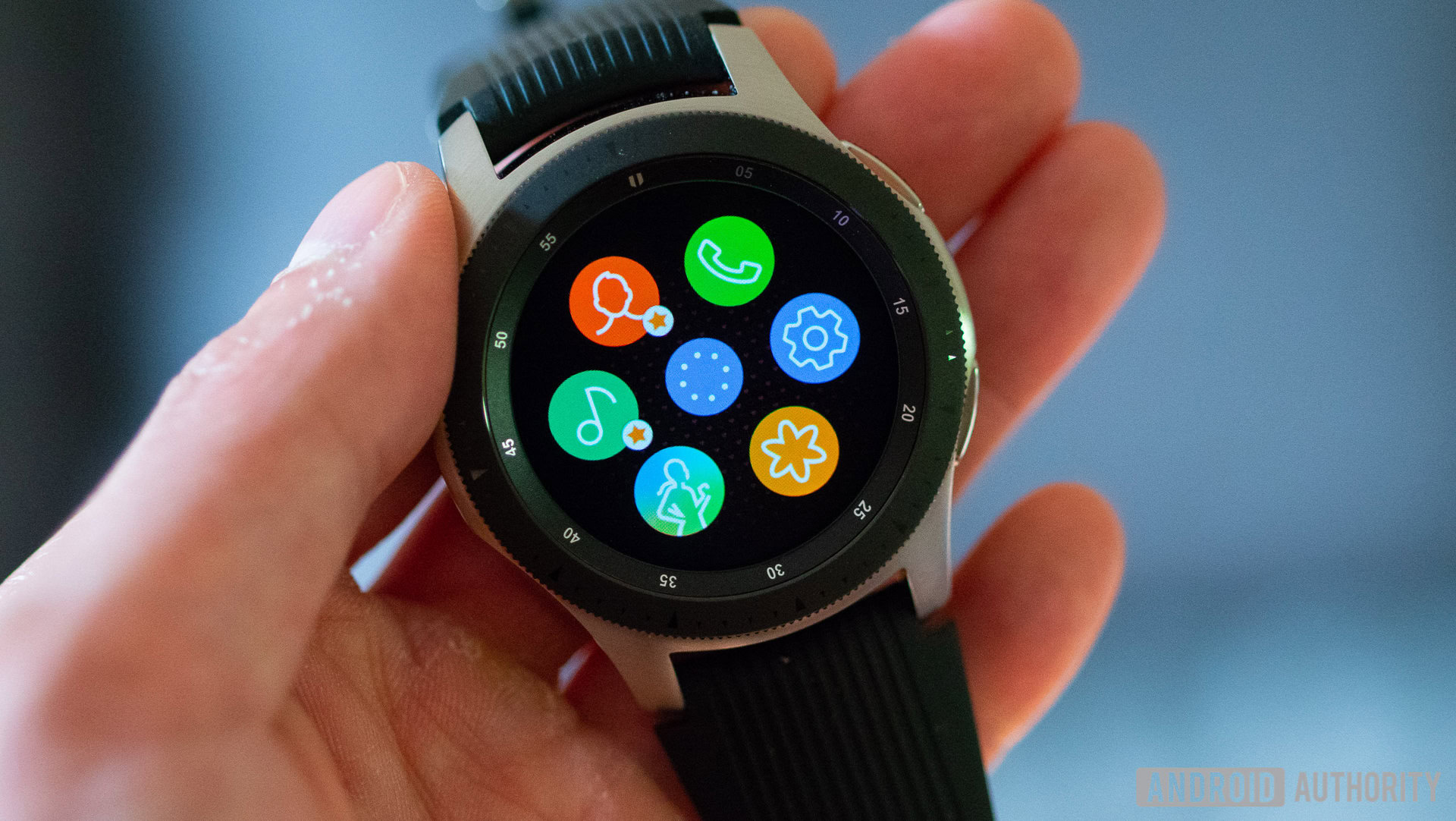
Specs
| Samsung Galaxy M40 | Xiaomi Redmi Note 7 Pro | |
|---|---|---|
Display | Samsung Galaxy M40 6.3-inch IPS LCD Full HD+ | Xiaomi Redmi Note 7 Pro 6.3-inch IPS LCD Full HD+ |
Processor | Samsung Galaxy M40 2GHz octa-core Qualcomm Snapdragon 675 Adreno 612 GPU | Xiaomi Redmi Note 7 Pro 2GHz octa-core Qualcomm Snapdragon 675 Adreno 612 GPU |
RAM | Samsung Galaxy M40 6GB | Xiaomi Redmi Note 7 Pro 4/6GB |
Storage | Samsung Galaxy M40 128GB expandable | Xiaomi Redmi Note 7 Pro 64/128GB expandable |
Camera | Samsung Galaxy M40 Rear: 32MP standard 8MP wide 5MP depth Front: 16MP | Xiaomi Redmi Note 7 Pro Rear: 48MP primary 5MP depth Front: 13MP |
Battery | Samsung Galaxy M40 3,500mAh | Xiaomi Redmi Note 7 Pro 4,000mAh |
Software | Samsung Galaxy M40 Android 9.0 Pie | Xiaomi Redmi Note 7 Pro Android 9.0 Pie |
Dimensions | Samsung Galaxy M40 155.3 x 73.9 x 7.9mm 168g | Xiaomi Redmi Note 7 Pro 159.2 x 75.2 x 8.1mm 186g |
Pricing and final thoughts
Samsung Galaxy M40
- 19,999 rupees (~$290)
Xiaomi Redmi Note 7 Pro
- 4GB RAM – 13,999 rupees (~$200)
- 6GB RAM – 16,999 rupees (~$245)
For the same amount of RAM and storage, the Xiaomi Redmi Note 7 Pro is 3,000 rupees (~$45) cheaper than the Galaxy M40. And this kind of aggressive pricing is Xiaomi’s SOP. The Redmi Note 7 Pro may feature specs similar to the Galaxy M40, but it has the price tag of the Galaxy M30.
The Redmi Note 7 also has a few advantages over the Galaxy M40, such as a headphone jack and better battery life. Overall, the Galaxy M40 is arguably the better phone of the two. It comes with a better display, a smoother software experience, a better camera, NFC, and a unique design that you won’t get with any other smartphone in this budget category.
Whether that’s enough to justify the 3,000 rupee difference though is up to you.